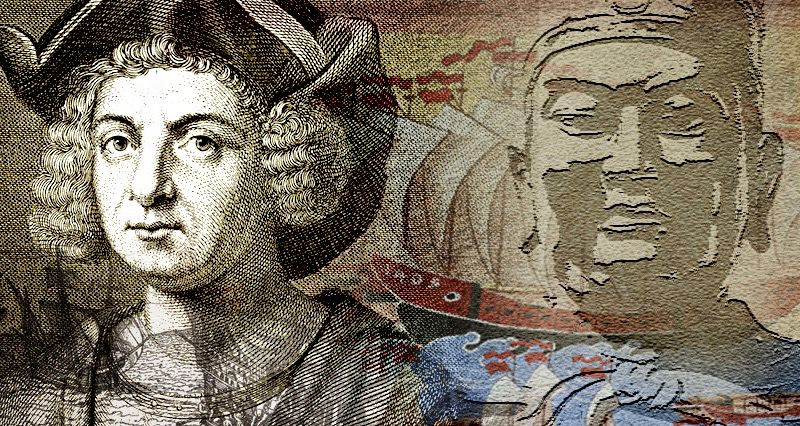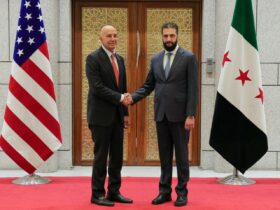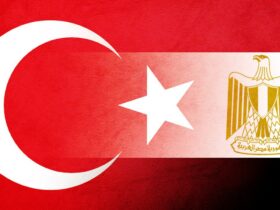Spain and China: Two different forms of approaching the world.
Spain and China: Two different forms of approaching the world.
By Sergio Rodríguez Gelfenstein
The publicized national commotion that occurred in Spain as a result of the fact that the president of Mexico, Claudia Sheinbaum, did not invite the Bourbon king to her inauguration, leads to the question of whether – as a poster widely disseminated these days in the Spanish streets says – the conquistadors were “genocidal and slaveholders” or “heroes and saints”. This question requires us to study and understand the causes and consequences of colonialism and to draw conclusions about a country that celebrates the date of the beginning of a genocide as a national holiday.
It is worth knowing that only in the first century of colonization, the Spaniards caused the death of 56 million inhabitants in Abya Yala, which is the name that the native peoples use to refer to the territory of Our America. It is also important to know that in that same period, the Bourbon monarchy stole up to 9,550 tons of gold and silver from the region with which they financed their own opulence and that of the other royal houses of Europe.
When on March 25, 2019, President Andrés Manuel López Obrador wrote to King Felipe VI of Spain and Pope Francis to ask them to apologize to the native peoples of Mexico for the abuses committed during the conquest of the country, 500 years ago, he was referring to that. The then Mexican president required them “to tell the story of grievances and ask forgiveness from the native peoples for the violations of what is now known as human rights,” He added that: “There were massacres, impositions. The so-called conquest was done with the sword and the cross.”
Given the figures mentioned above, we should not be scandalized by the request, nor should we consider it a national affront (although Spain is not a nation, but a sum of them, under the rule of the Castilians). The Bourbon family itself does not have its origin in present-day Spain but comes from France and was imposed on the peninsula through arranged marriages to conquer and sustain power.
The Mexican president’s letter
Through a letter addressed to the Mexican president released on September 26, 2021, on the occasion of the anniversary of the independence of the Latin American country, Pope Francis did apologize for the “sins” of the Catholic Church in that country. The highest authority of the Catholic Church expressed that: “Both my predecessors and I myself have asked forgiveness for personal and social sins, for all actions or omissions that did not contribute to evangelization.”
López Obrador said that everyone had to ask for forgiveness on the occasion of the 500th anniversary of the fall of Tenochtitlan, the capital of the Aztecs, after two and a half months of siege that led to its capture by the cruel conqueror and adventurer from Extremadura, Hernán Cortés, which meant the definitive collapse of the Mexica empire. With this, he was trying to make 2021 one of national and international reconciliation. With total conviction he said that it was “time to say we are going to reconcile, but first let’s ask for forgiveness.” Setting an example, he said that he was also going to do it “because after the colony there was a lot of repression against the native peoples,” referring to the punishment suffered by the Mayan and Yaqui peoples during the government of President Porfirio Díaz (1872-1910).
It is of great interest that in this request for forgiveness and search for reconciliation, López Obrador included the Chinese community that during the Mexican Revolution was also repressed, especially in the northern states of the country.
The corrupt monarchy is offended
But Spain’s government and its corrupt monarchy refused to take positive steps for the future on the road to full reconciliation. On the contrary, they are now surprised that finally, leaders with dignity, did not invite the representative of royalty to accompany a democratic event emanating from popular sovereignty, something that in Spain they do not know because they have never elected their head of state.
On the contrary, the Spanish government, trying to hide the shame that emanates from the misfortunes and misfortunes of the process of conquest and colonization, regretted that López Obrador’s letter had been made public. It could be assumed, then, that López Obrador, being right, should not have expressed it openly “so as not to sully the honor of the monarchy.” Feeling offended, the government of Madrid crowned its ridiculous demonstration by stating that it rejected “with all firmness” the content of López Obrador’s letter.
Three years later, to the astonishment and lament of the Spanish elite for the non-invitation of the Bourbon King to the change of government in Mexico, with total transparency, President Claudia Sheinbaum said that Spain had been invited to the ceremony of October 1, but not King Felipe because the monarch, with total contempt, refused to respond to López Obrador’s request for definitive reconciliation between the two peoples. According to a statement issued by Sheinbaum, this “would have corresponded to the best diplomatic practice of bilateral relations.” End of business.
On another level, we should ask ourselves whether, as the Spanish ultra-right says, the conquistadors, given the 56 million murdered and the 9,550 tons of gold and silver stolen, are indeed “heroes and saints”. In this sense, it is relevant to say that the voyages of that time were not always considered “discoveries” nor did they require the “cross and the sword” for the imposition of foreign cultures and religions by force.
Chinese Admiral Zheng He’s travels
In 1403, almost 90 years before Christopher Columbus used his amatory arts to “convince” the Castilian queen Isabella II to finance his exploratory adventure to the west, the Chinese admiral Zheng He began the first of the seven voyages through the sea that they knew as the “Western Ocean”. Until 1433, Zheng He’s voyages were basically limited to the Indian Ocean, traveling to 30 countries in Asia and Africa, reaching the west coast of India and later extending navigation to the Persian Gulf and the east coast of Africa.
Compared to the 25-30 meters in length and 6.5-9 meters in beam of Columbus’s three caravels carrying around 25 sailors each in 1492, Admiral Zheng’s fleet in 1405 was composed of “more than 240 ships and more than 27,000 soldiers and crew [and] was equipped by various professionals, including boatmen, sailors, soldiers, doctors, cooks, interpreters, fortune tellers, and even hairdressers” according to a study conducted by Professor Wan Ming, a researcher at the Institute of Ancient History of the Chinese Academy of Social Sciences (CASS), and president of the Chinese Society for the History of Sino-Foreign Relations, who believes that Zheng He’s travels should be considered the greatest of his time in “terms of scale, number of ships and sailors and in the prolongation in time”.
Zheng He organized the fleet based on a nautical conception that established the existence of ships differentiated by their mission. Thus, there were command, war, and logistics ships. Among the latter were what were known as “treasure ships” that were used to transport the goods that were exchanged. Treasure ships were located in the center of the fleet, and warships around them. In fact, the successful voyages of Zheng He’s fleet also demonstrated his excellent nautical technology and navigational ability.
Although Zheng He’s fleet was equipped with means of combat, these were defensive in nature. The arrival of the fleet to other ports meant, in the first place, the search for friendly relations with the settlers and then the beginning of commercial negotiations through exchange and tribute. The latter did not have the same meaning as in the West but was a kind of ritual through which the natural products of the country were presented and an emblematic offering was made of the objects that were offered to the counterpart. But his value was balanced. This practice was considered by the Chinese to be an expression of respect and recognition for the emperor and a way of expressing gratitude for his protection. There was a mandate set forth in an edict of the emperor that the exchange should be mutually beneficial.
Peaceful and mutually beneficial visits
The mission emanating from the Emperor for Zheng He implicitly established that in addition to carrying out commercial work, he had to maintain peace on the seas, guarantee maritime security and mediate in the conflicts that could be encountered during the crossing. The Chinese leaders of the time were very interested in increasing their prestige in the regions visited, without this meaning occupying territories or exercising political control over them. Likewise, it had to promote prosperity in the places where it arrived and multicultural interaction with the towns frequented. It was common for Zheng He not to visit the centers of power but limited himself to the port cities where he could trade without having the imperative to relate to the political establishments of those countries.
According to Professor Wan, “Zheng He’s fleets were actually an official large-scale international trade team that conducted frequent commercial activities in the places it reached.” Thus, it can be explained why no country visited was subject to looting or occupation.
Professor Wan explains this by saying that the main reason for this is that the diplomacy of the ruling Ming Dynasty clearly stated that one should not conquer other peoples but share with them in order to establish a peaceful international system without resorting to force. In practice, what was done through trade was to establish a new system emanating from the Chinese order that proposed to “share the benefits of peace” without threatening any country. Knowing this could somehow explain the international behavior of today’s China.
“1421: The year that China discovered the world”
Although most researchers agree that Zheng He’s travels spanned East, Central, and West Asia and Africa, British writer Gavin Menzies wrote a book titled “1421. The year China discovered the world” in which he states that during that year, the Chinese arrived in America. This work has been rejected by Western historiography but this opinion has been refuted by the prominent Mexican sinologist Enrique Dussel Peters who stated that: “… from my historical studies (in which I used Henricus Martellus’ map of 1487, of the fourth peninsula of Asia), his [Gavin Menzies’s] arguments regarding his fundamental thesis are irrefutable (there may be details to be corrected, but they do not take away from its forcefulness). We have to count on this work!”
It is not the subject of this article; however it is imperative to establish that there is a hypothesis that the Chinese arrived in America 71 years before Columbus. It is something that will have to be further investigated, but in other latitudes of the planet there is clear evidence: the Chinese arrived at the beginning of the fifteenth century and in none of the African or Asian territories visited by Zheng He or other navigators from that country, would they speak Mandarin Chinese. Similarly, although Zheng He was a Muslim, neither his religion nor the Buddhist religion that had been introduced to China 1,600 years earlier, was imposed on the countries visited.
Thus, it is clear that it was possible to establish links aimed at trade and cultural exchange between peoples in ancient times. China did it, but European civilization, inherently savage and violent, could not. Its cruel DNA has led humanity to the worst calamities in history: racism, colonialism, slavery, fascism, Nazism, capitalism, imperialism, Zionism and the two most brutal wars ever experienced on the planet. It is enough to go to their museums, to observe how proudly they exhibit the product of their excesses.
All these misfortunes arose from European soil. The only thing President López Obrador asked for was forgiveness to advance in a necessary reconciliation. But, for Spain this is not possible, I have already said it, violence and imposition are in its DNA. This is what explains their current support for Ukraine’s pro-Nazi government and the huge arms sales to Israel while tearing their garments with the human rights of the Palestinians.
War and conflict are the lifeblood that feeds their bodies. That is why they do not understand and will not understand that a growing majority of the planet rejects and repudiates them until, in the not-too-distant future, they are definitively deposited in the dung heap of history, a place where they have always been and from which they will never be able to leave.

















Leave a Reply